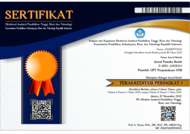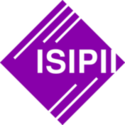KOMPARASI PEMIKIRAN BERWICK SAYERS DAN MARY MORTIMER TENTANG SISTEM KLASIFIKASI PERPUSTAKAAN
Abstract
This paper focuses on a good library classification system based on the thoughts of Berwick Sayers and Mary Mortimer. It compares and looks at the relevance of these thoughts. This study applied a qualitative approach and comparative descriptive analysis. Both Berwick Sayers and Mary Mortimer have been famous for their works including the library classification system. Based on the results of a comparison between their thoughts, the study found four fundamental differences. The differences cover 1) A good form of classification is easy to use as explicitly proposed by Mary Mortimer because a ‘good version’ for the librarian is not necessarily a ‘good version’ for the library user. Thus, the result will be different. However, if it is easy to use for the user, then it is certainly a good classification form. Meanwhile, Berwick Sayers does not provide an assertive statement but only explains about a good classification; 2) Simple notation versus specific notation; 3) Fitted with a geographical table; 4) Alphabetical versus systematical. Further, the study found four similarities between those thoughts, such as 1) Cover all fields of science; 2) Accommodate new scientific subjects and notations; 3) Develop new science, and 4) Have a supervisory board. Explicitly, the idea that can be implemented in the current library is Mary Mortimer’s thought, Dewey Decimal Classification.
Keywords
Full Text:
PDFReferences
G.G., Chowdhury. 1999. Introduction to Modern Information Retrieval. London: Association Publishing. Hamakonda, Towa P. dan J.N.B. Tairas. 1983. Penggantar Klasifikasi Persepuluhan Dewey. Jakarta: Libri. Indonesia. Undang-Undang Republik Indonesia Nomor 43 Tahun 2007 Tentang Perpustakaan. Institut Seni Indonesia Yogyakarta. 2018. Perbandingan Klasifikasi DDC Dan Klasifikasi UDC. Dan Klasifikasi UDC. Yogyakarta: Perpustakaan ISI Yogyakarta. Lasa HS. 2009. Kamus Kepustakawanan Indonesia. Yogyakarta: Pustaka Book Publisher. Mortimer, Mary. 2007. Learn Dewey Decimal Classification. USA: Total Recall Publications. Mustaqim, Abdul. 2014. Model Penelitian Tokoh (Dalam Teori dan Aplikasi). Jurnal Studi Ilmu-Ilmu Al-Quran dan Hadis. Vol. 15, No.2. Olle, James G. 1981. W.C. Berwick Sayers, Librarian adn Teacher. Jurnal Librarianship, 13, (4), October, 1981. https://journals.sagepub.com/doi/abs/10.1177/096100068101300403. Diakses 1 Desember 2019. Rahma, Muswita Widya. 2008. Komparasi Bagan Sistem Klasifikasi Dewey Decimal Classification (DDC) Dengan Universal Decimal Classification (UDC). Skripsi. Medan: Universitas Sumatera Utara Sayers, Berwick. 1918. An Introduction to Library Classification. New York: Grafton & Coptic House Inc. Sembiring, Darwis. 2014. Pengolahan Bahan Pustaka: Klasifikasi dan Katalogisasi. Bandung: Yrama Widya. Sukardi. 2014. Metodologi Penelitian Pendidikan: Kompetensi dan Praktiknya. Jakarta: Bumi Aksara. Sulistyo-Basuki. 1991. Pengantar Ilmu Perpustakaan. Jakarta: Gramedia Pustaka Utama. Weigand, Wayne A. 1998. The Origins Of The Dewey Decimal Classification Scheme. Libraries & Culture. Texas: University of Texas Press. WorldCat. WorldCat Daring. https://www.worldcat.org/title/learn-dewey-decimal-classification-edition-22/oclc/646784693. Diakses 2 Desember 2019. Yusuf, Pawit M dan Yaya Suhendar. 2005. Pedoman Penyelenggaraan Perpustakaan Sekolah. Jakarta: Kencana. Yusuf, Taslimah. 1996. Materi Pokok Manajemen Perpustakaan Umum. Jakarta: Universitas Terbuka.
DOI: https://doi.org/10.20961/jpi.v6i2.46421
Refbacks
- There are currently no refbacks.
License URL: https://creativecommons.org/licenses/by-nc-sa/4.0/




.png)
.png)









1.jpg)
